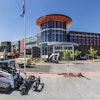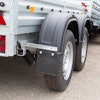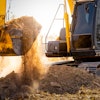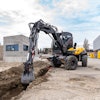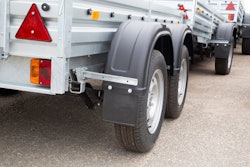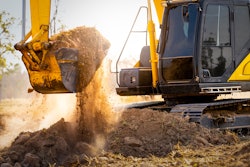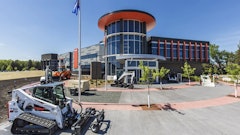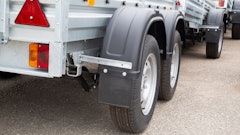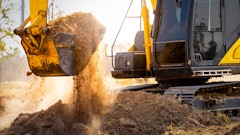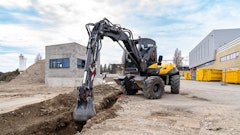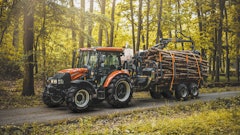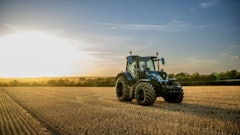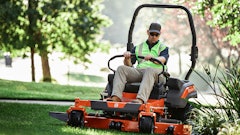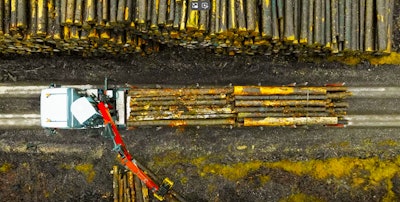
The Department of Agriculture’s Forest Service, America’s foremost federal forestry organization, manages 154 national forests and 20 national grasslands covering 193 million acres across 43 states, Puerto Rico and the Virgin Islands — approximately 900 million acres of forest. A further 20% of U.S. forests are owned commercially and around 430 million acres are privately owned. As well as full-time employees, forestry workers include numerous self-employed contractors taken on for specific projects or for seasonal work.
 Brigade Inc.
Brigade Inc.
Enhanced Safety Solutions On- and Off-Site
Forestry work is a sector in which vehicle safety solutions are of great importance to support drivers with staying safe and comfortable while at work. Drivers are operating large machines day and night, backing up and circling in confined spaces, often in rain, snow and fog. Conditions are often muddy and slippery and poor visibility among the trees is a big issue so staying alert and in control are important factors for successful operations.
Apart from the mining industry — which has the most — there are more mega-vehicles in the forestry industry than any other. Drivers of tractors, log stackers and loaders, skidders, front-end loaders, bulldozers and other traffic all sit in elevated positions and are maneuvering logs which add to the dimensions of the vehicle. The most common cause of injury is a ground worker being struck by a reversing or forward load-carrying vehicle, so using the right technology will help operators to improve safety and efficiency.
However, it’s not just in forests that forestry workers need enhanced assistance. According to statistics, it’s estimated that 27% of logging incidents between 2011 and 2019 occurred during long-haul logging truck journeys — a high proportion of these were due to driver fatigue or distraction. And, however carefully stacked they are, logs can shift position during transit, changing the center of gravity which the truck driver must manage.
 Brigade Inc.
Brigade Inc.
Moving Logs Safely
Specialized machines drag logs overground to collection areas. Grapple skidders, cable skidders and feller bunchers are used to move logs and ensure they’re ready for collection. At the loading area, log loaders and front-end loaders with forks or grapples lift logs for stacking onto transportation trucks. All these operations involve heavy lifting with blind spots created not only by the vehicle itself but also by the trajectory of the log.
With front-end loaders, drivers should be able to see the entire surroundings as the log changes position. This also applies to buckets being raised and lowered at the front of a vehicle. In any logging operation, there are ground workers moving in and out of front, rear and side blind spots. Workers will often wear ear defenders to protect against machinery noise too, which can mean they can’t hear machines or audible alerts.
Vehicle Safety Solutions for the Forestry Industry
Advanced protection is supporting workers in the forestry industry to work safely and ensure vital equipment continues to operate effectively. A forestry site is constantly busy, so fitting vehicles with up-to-date security camera systems assists site managers with keeping all operations running smoothly.
According to a study by Virginia Tech, the average lifespan of forestry machines is 13.2 years, which can mean that cameras already in place won’t necessarily provide the superior protection and assistance that the latest models deliver.
 Brigade Inc.
Brigade Inc.
How AI Is Transforming Commercial Vehicle Safety
The unstoppable rise of artificial intelligence has led to a new generation of vehicle camera safety systems providing drivers with greatly augmented vision.
Front-load machines, such as wheel loaders and forklifts, have an ever-changing blind spot as they maneuver their load. As the bucket moves, the blind spot changes with it.
However, these blind spots can eliminated by using a safety system that provides camera updates to the driver via a monitor and automatically switches camera views as the front load mechanism is engaged. With the addition of pedestrian detection, the operator receives an audible alert when someone is in front of the machine.
One camera is mounted high on the wheel loader. This camera feeds into the monitor when the machine is being operated with the bucket / front load in down or neutral position. A second camera is mounted behind the front load mechanism. As it begins to move up, the system triggers this camera to feed into the monitor, ensuring the operator has a clear view regardless of the location.
Meanwhile, cutting-edge AI has been incorporated into modern 360-degree cameras which are capable of identifying humans in vehicle blind spots. These intelligent camera systems aid maneuverability by providing drivers with a complete 360-degree view of their vehicle in a single image. The system merges images from four cameras positioned around the vehicle and provides a real-time view on an in-cab monitor, creating a bird's-eye view of the vehicle and its surroundings.
 Brigade Inc.
Brigade Inc.
AI cameras locate and recognize pedestrians within a pre-defined zone and reliably inform the driver visually and/or audibly of their presence. Algorithms train the system to recognize human beings and zone out trees, animals or other distractions, keeping sites safe. This reduces the likelihood of a false alarm; constant false readings are likely to go unnoticed or lead to them being switched off entirely.
An innovative system will not only keep operations running safely, but also provide trusted support for drivers. AI cameras should integrate effortlessly into a vehicle's existing infrastructure for a seamless upgrade and be compatible with a range of AI-powered devices.
AI driver safety cameras are another tool which support drivers with staying alert and in control of fatigue monitoring. Sensors positioned near the steering wheel track signs of distracted behavior and tiredness by continuously monitoring the driver’s face, eyes and head movements. They can pick up on cellphone usage and seatbelt deployment as well as unusual drooping, yawning or nodding. Built-in AI analyzes these signals and provides audible updates to the driver. Erratic steering and unusual vehicle positioning can also trigger the system, and there is the option of notifying the fleet manager too.
As shown by the statistics, the forestry industry needs trusted and reliable support to maintain safe sites. AI systems and other safety solutions are enhancing safety for the whole industry, reducing fatalities and injuries, and ultimately enabling operators to drive with confidence.
